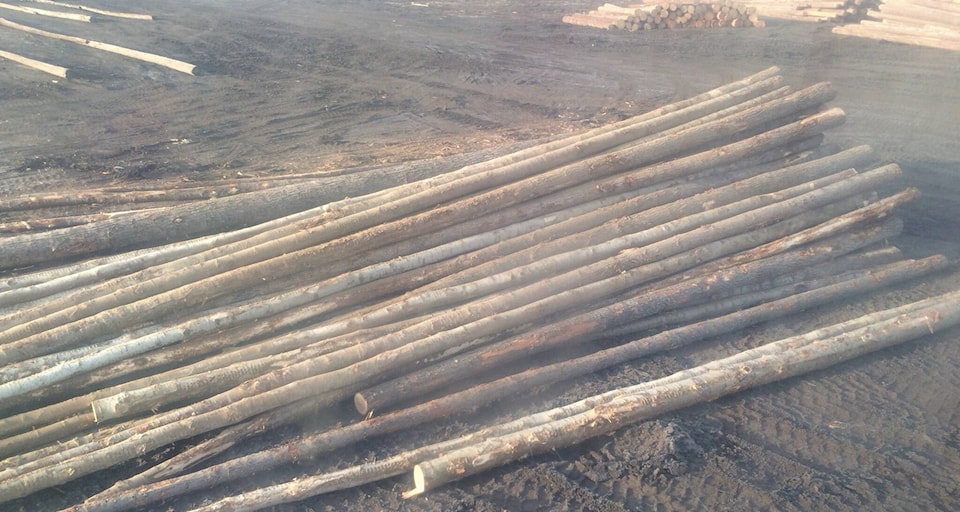Quesnel’s community forest application is moving ahead well.
Forestry Initiatives Manager Erin Robinson said the five governments involved in the project are working to figure out their values, select land and create a management plan. Quesnel and the Nazko, Lhtako Dené, ?Esdilagh and Lhoosk’uz Dené First Nation governments make up the community forest stakeholders.
The Cariboo Regional District will not be part of the community forest.
The land selection, values and management plan make up a large portion of the governments’ application to the province.
READ MORE: Quesnel council approves funding for community forest process
“The application will look a lot like the community wildfire protection plan,” Robinson said.
“It’ll be a pretty substantial document. If (the province) approves it it will transition into an operating plan.”
The community forest around Quesnel has been offered an annual harvest of 46,000 cubic metres of conifer and 27,000 cubic metres of deciduous trees.
Robinson said the governments have hired a consultant to select the best pieces of land for the community forest.
“We decided as a group, we don’t want a bunch of little postage stamps all around the timber supply area,” she said.
“We want it as big an area as possible to influence ecosystem, and landscape and all the values that come along with community forestry. And by the end of it, if we’re successful in the application, we’ll be land managers.”
Each community forest is set up with different values. Robinson said each government is aligned on what values the community forest should follow.
“Fuel management – protecting our communities, is at the forefront of everyone’s minds,” she said, adding that other values include restoring the ecosystem, protecting the watershed, allowing recreation space and providing jobs make up the rest of the priorities.
READ MORE: City of Quesnel moves community forest process forward, enters into participation agreement
“You can’t just say, ‘We just want to have a park and we’re not going to log anything.’ it doesn’t work that way. You’ve got to contribute to the harvest, but you can do it for different values.”
Robinson said the group has been in contact with the manager of the Chinook Community Forest near Burns Lake, which operates in a similar model with multiple First Nations governments partnering with a municipality.
“(Our community forest) has been a bit different because the province actually approached all of the governments with a letter of offer,” she said.
“Usually it’s a group of people, they get together at the grassroots level…this actually came more from the top down, which is interesting.”
The province is also using the Quesnel community forest as a way to test the waters on the deciduous timber supply.
“It will also allow us to start (answering) how you add value into the system,”Robinson said.
“The chief forester said this is a test to see what products can we make out of deciduous, and how do we actually use it, not just grind it up or burn it.”
The process for the community forest isn’t expected to be completed for a couple more years, with Robinson saying back and forth with the provincial government is expected.
“They’re asking us to pick six (parcels of land), and they will total much over that annual allowable cut,” she said.
“Once we put that in our application, the government will say, ‘Okay, we’ve ran our analysis, and we agree or don’t agree.’”
The value of the harvest is not known.
“It’s too early to talk about (money),” Robinson said.
“It’s really important to look at what the management of that will enable, rather than tossing dollar amounts around.”
Robinson added instead of cutting a cheque with any profits to each government, everyone has agreed the money should be used to fund projects that will benefit every community in the area.
“It’ll open up innovation, it’ll open up different types of harvesting practices, it will allow us to do more fuel management right in our own backyard,” she said.
READ MORE: Several Quesnel area governments work toward forming community forest agreement
Do you have something to add to this story, or something else we should report on? Email: cassidy.dankochik@quesnelobserver.com
@GimliJetsMan
cassidy.dankochik@quesnelobserver.com
Like us on Facebook and follow us on Twitter.
